Southwest Michigan field crops update – July 14, 2022
Both corn and soybean are entering key reproductive stages as warm temperatures continue.

Weather
Temperatures this past week were near-normal to slightly below-normal on average in the southwest. We picked up 200 growing degree days (GDD, base 40 for alfalfa) or 130 GDD50 (for corn and soybean) this past week. The forecasted reference evapotranspiration (FRET) rate will be 1.3-1.4 inches this coming week. The forecast predicts the addition of another 220 GDD40 or 150 GDD50 in the coming week. Both the 6-10 day and 8-14 day outlooks point to above-normal temperatures for the last week of July.

Precipitation was less than half an inch for most of the region outside of an E-W band in the second and third tier of counties that received as much as 2 inches this past week. We were dry in the last half of June but mostly wetter than normal so far in July, so the last 30 days have been near normal on average. The forecast is for only another 0.25-0.50 inch of rain in the coming week with essentially all of that predicted to fall on Sunday. The medium-range outlooks call for normal to slightly lower than normal chances of rainfall for the last week of July.


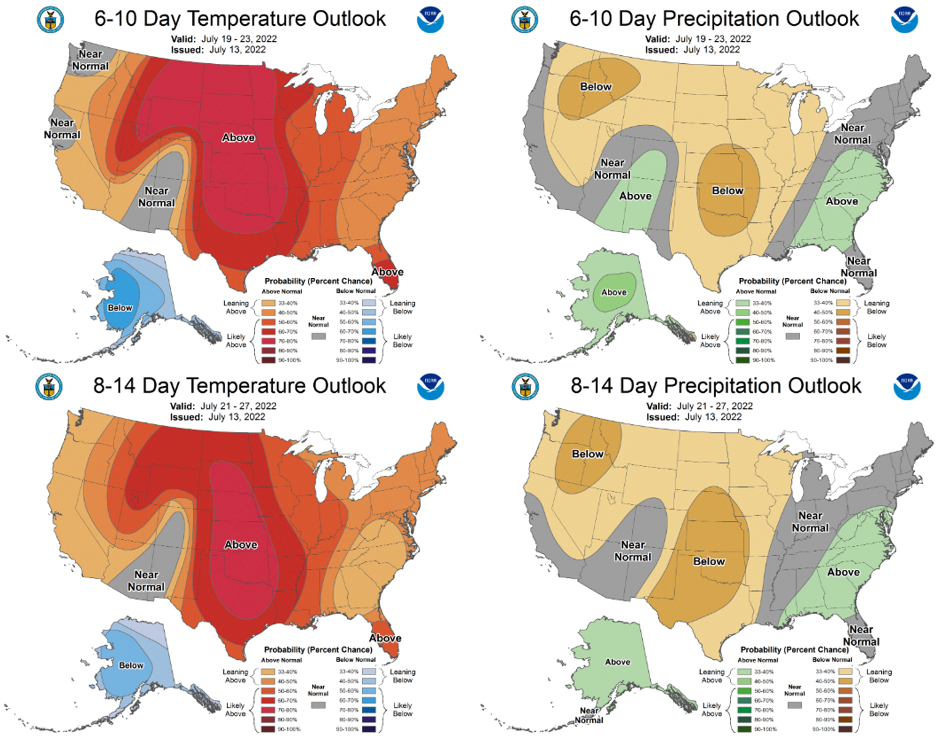
Crops and pests
Corn and soybean continue to look healthy with 66 and 60 % of the crop rated good to excellent, respectively. Early-planted corn has reached the silking stage while most fields are still pre-tassel. Soybean in most fields is still at beginning flower (R1, open flower at any node) or full flower stage (R2, open flower at one of the two uppermost nodes) with pods forming at the base of many plants. A few plants in early-planted fields with short-season varieties had reached the beginning pod growth stage (R3, 3/16 inch or longer appear at one of the four uppermost nodes). Only minor bean leaf beetle and Japanese beetle feeding has been found in soybean, and no signs of tar spot have been found yet in the lower canopy in corn fields.
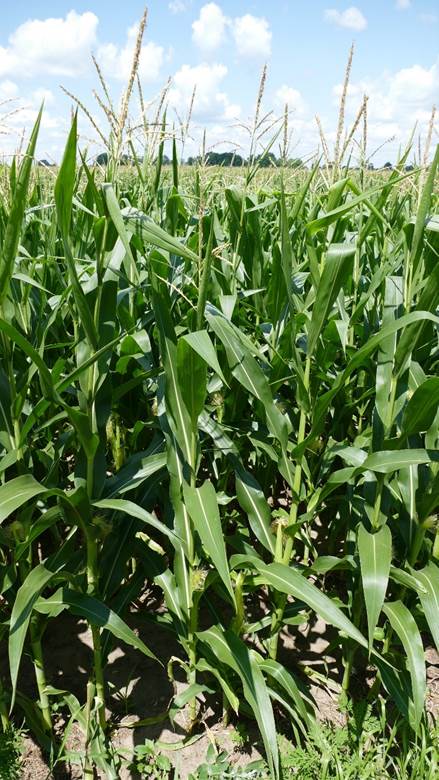
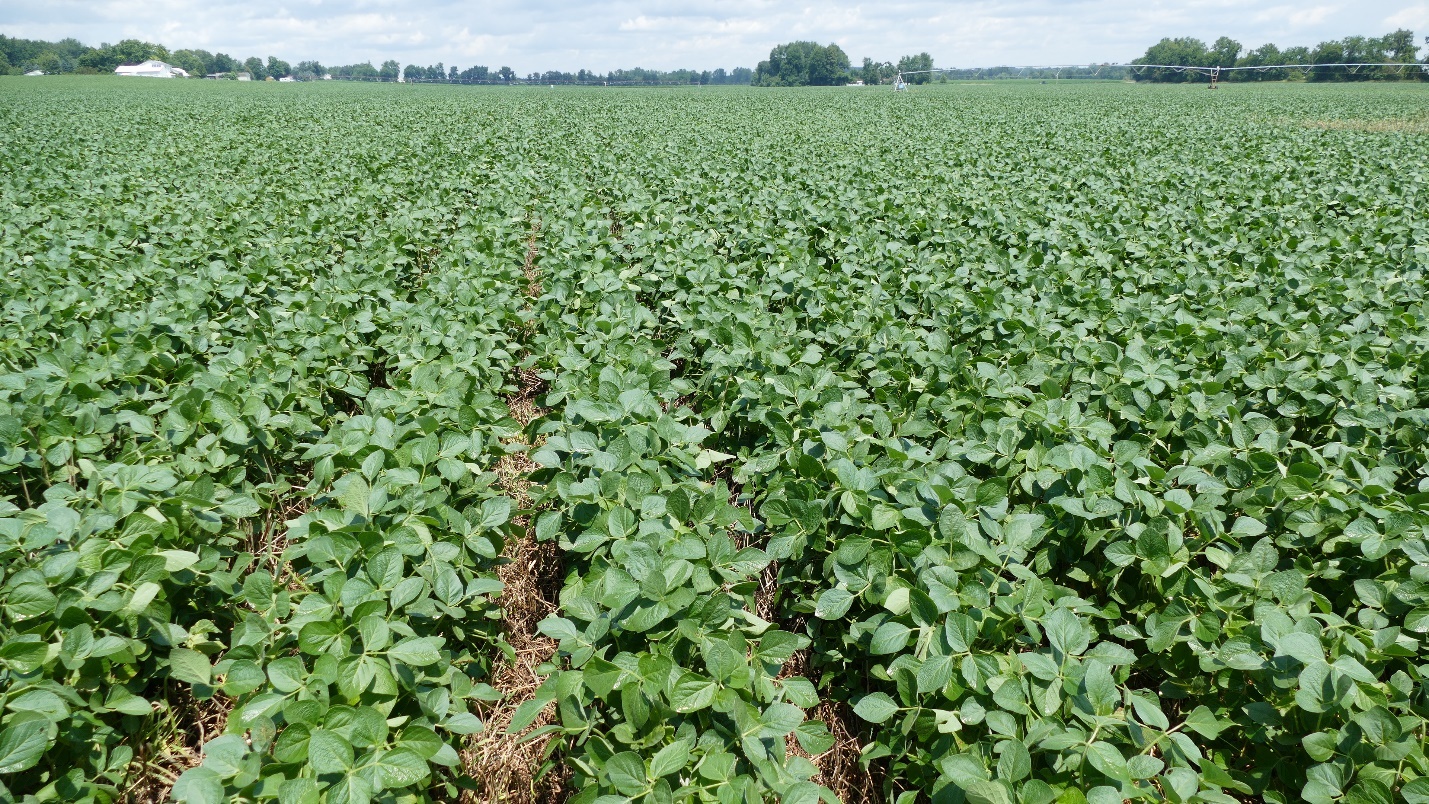
Weeds. Recently a graduate student from the MSU weeds group visited southwest Michigan to collect samples of several weed species for a molecular study including waterhemp and Palmer amaranth. These amaranth species are related to both redroot and smooth pigweeds and can be difficult to tell apart for those who have not spent time looking closely at the plants. The following pictures will help in distinguishing these species. The MSU weeds group has two related resources available online to aid in identification and to manage these weeds—“Keys to distinguishing Palmer amaranth from other species” and “Management of multiple-resistant Palmer amaranth—and Purdue has a similar fact sheet available online, “Palmer Amaranth Biology, Identification, and Management.” If you find either waterhemp or Palmer amaranth in your fields, please contact the St. Joseph County Extension office (msue.stjoseph@county.msu.edu or 269-467-5511) and we will come and collect samples for this study.
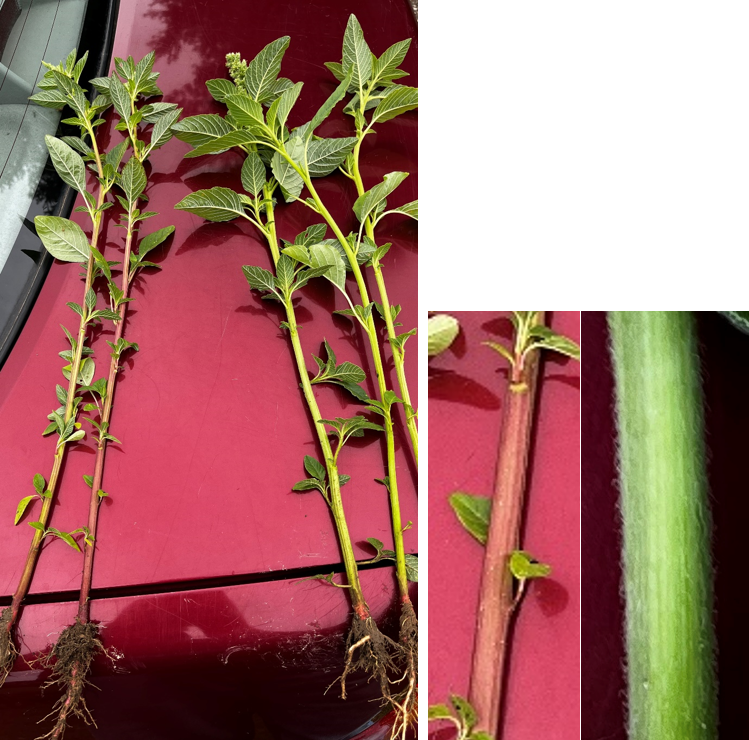

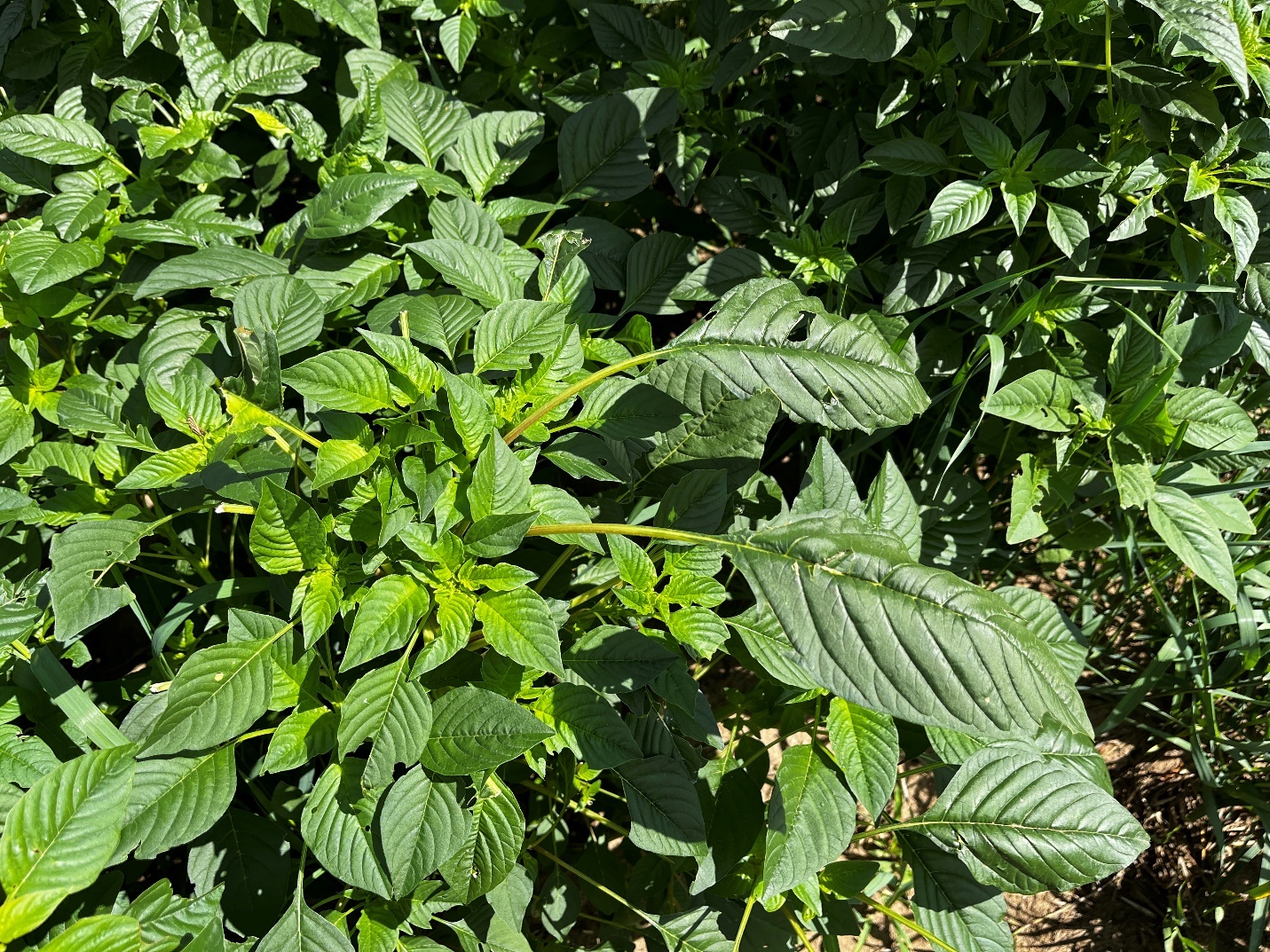

Insects. There was a significant uptick in moth catches for western bean cutworm (WBC) this week. This is a little surprising since the trap catches in Indiana last week were meager, and they usually see increases in moth flights before we do. Unfortunately, the moths timed their arrival to coincide with many fields in the region being about a week away from tasseling, and the peak flight may arrive just when most fields will be pre-tassel, the stage when the females lay eggs. No fall armyworm (FAW) were caught again this week.
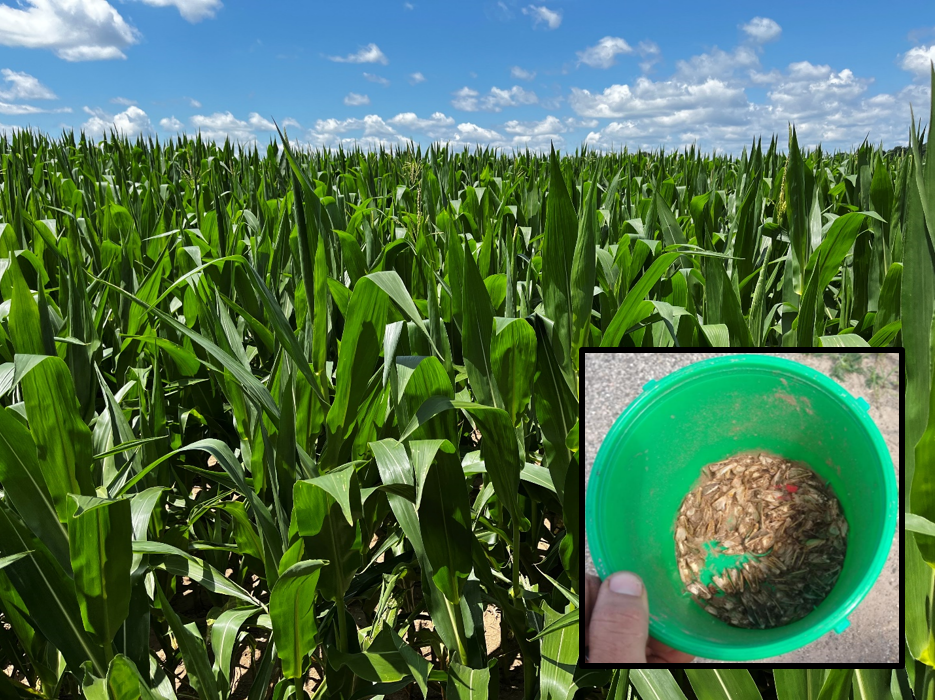
Moth captures for WBC in southwest Michigan.
|
5-Jul |
12-Jul |
|
|
WBC1 |
1 |
12 |
|
WBC2 |
1 |
25 |
|
WBC3 |
0 |
6 |
|
WBC4 |
2 |
33 |
|
WBC5 |
10 |
109 |
|
WBC6 |
2 |
23 |
Irrigation
Corn at V16 all the way through beginning dent (R5) has a Kc of 1.2 and will require 1.5-1.7 inches this week. Soybeans at R1 (beginning bloom, Kc=1.0) will use 1.3-1.4 inches, those at R2 (full bloom, Kc=1.1) will use 1.4-1.5 inches, and early fields that have reached R3 (beginning pod, Kc=1.2) will use 1.5-1.7 inches.
Field Crops Virtual Breakfast
The topic of this week’s MSU Extension Field Crops Virtual Breakfast was focused on sugar beet management which is not pertinent for our region. However, next week on July 21 we will have another “hot topics” edition of the Virtual Breakfast, so plan to join with your pressing questions.
If you were not able to join the session, the recordings will be closed-captioned and available at the Field Crops Virtual Breakfast webpage and the MSU Extension Field Crops Team social media platforms: Facebook, Spotify, YouTube, Apple Podcasts and Twitter.



 Print
Print Email
Email




